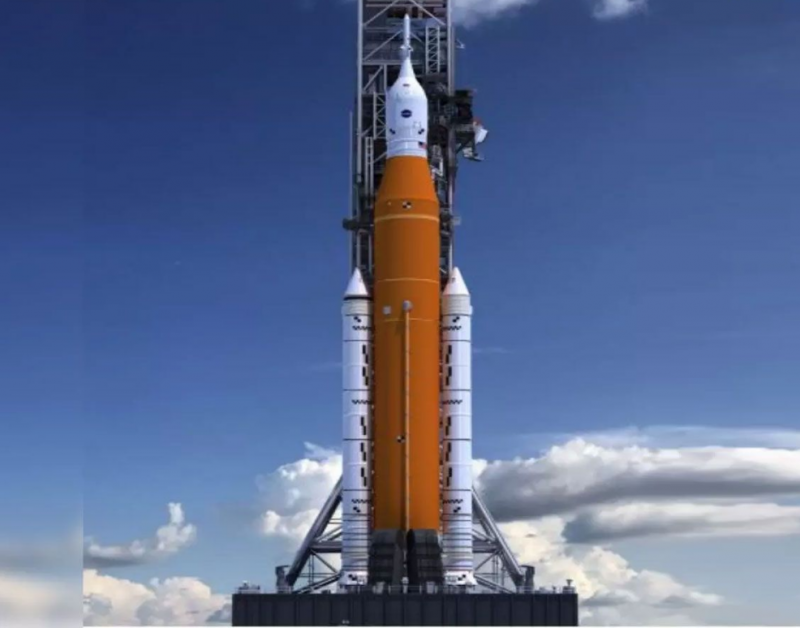
USA: After canceling a test flight earlier this week, NASA will attempt to relaunch its powerful New Moon rocket on Saturday, a NASA official said.
The eagerly awaited unmanned mission, code-named Artemis 1, will move the United States closer to stepping there for the last time five decades after sending astronauts back to the Moon.
According to mission manager Mike Sarafin, the NASA team "agreed to move our launch date to Saturday, September 3rd."
The blastoff was scheduled to launch on Monday morning, but was postponed due to the failure of a test to bring one of the rocket's four RS-25 engines to the proper temperature range for takeoff.
Sarafin revealed the new launch date at Tuesday's media briefing, and NASA later tweeted that the two-hour launch window would begin at 2:17 p.m. Saturday. (1817 GMT).
While there's still a "very good chance" of a Saturday launch, there's a 60% chance of rain or thunder on launch day, according to launch weather officer Mark Berger.
Artemis 1, which is named after Apollo's twin sister, is intended to test the Orion crew capsule and 322-foot (98-meter) Space Launch System rocket. In place of astronauts on the mission, effigies with sensors will measure radiation, vibration and acceleration.
50 years after the last moon landing by the Apollo 17 astronauts, tens of thousands of spectators gathered to watch the launch, including US Vice President Kamala Harris.
Operations to fill the orange-and-white rocket with extremely cold liquid hydrogen and oxygen were briefly postponed ahead of Monday's scheduled launch due to the risk of lightning.
Hydrogen filling of the main stage was stopped when a possible leak was detected. After the tests, the flow continued. Later, NASA engineers discovered a problem with engine temperature and decided to abort the launch.
The Space Launch System program manager, John Honeycutt, said the sensor's behavior "is not consistent with the physics of the situation" and added that such sensor problems "were not very unusual."
According to Sarafin, the team will meet again on Thursday to assess the situation. To determine whether the Orion spacecraft is safe for habitation soon, it will orbit the Moon. Artemis plans to put a woman and a person of color on the Moon for the first time at some point in the future.
Orion will travel 42 days around the Moon, covering a distance of 40,000 miles (60,000 kilometers) at its farthest point and 60 miles (100 kilometers) at its closest point. It is the deepest space ever visited by a human-carrying spacecraft.
Testing the capsule's heat shield, the largest ever built at 16 feet in diameter, is one of the main goals.
The heat shield would have to endure speeds of 25,000 mph and temperatures of 5,000 degrees Fahrenheit (2,760 degrees Celsius) upon return to Earth's atmosphere—about half as hot as the Sun.
The Artemis program, which is already years behind schedule, is expected to cost NASA $93 billion between 2012 and 2025, or $4.1 billion for each launch.
In the upcoming Artemis 2 mission, astronauts will orbit the Moon instead of touching it.
The crew of Artemis 3 will set foot on the Moon in 2025 at the earliest.
Additionally, Artemis has set on a crewed mission to Mars, given that humans have already visited the Moon.
The Gateway orbiting space station and a base on the surface are part of the Artemis program's effort to establish a long-term human presence on the Moon.
For the trip to the Red Planet, which will take at least several months, the Gateway will serve as a staging and refueling station.
Elon Musk court orders a Twitter whistle-blower In a dispute over a buyout
James Webb Telescope images released by NASA depict 'remarkable' details of Jupiter
Russian officials unveiled a model of their upcoming international space station "ROSS"